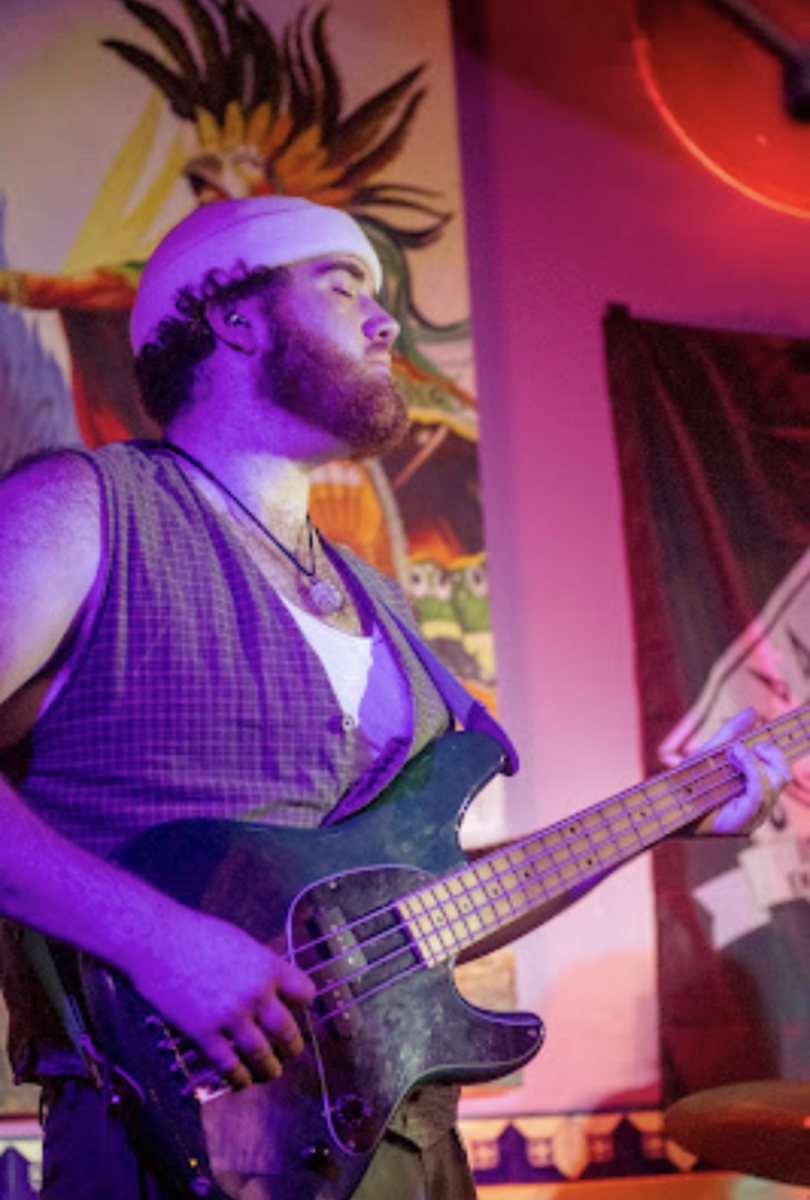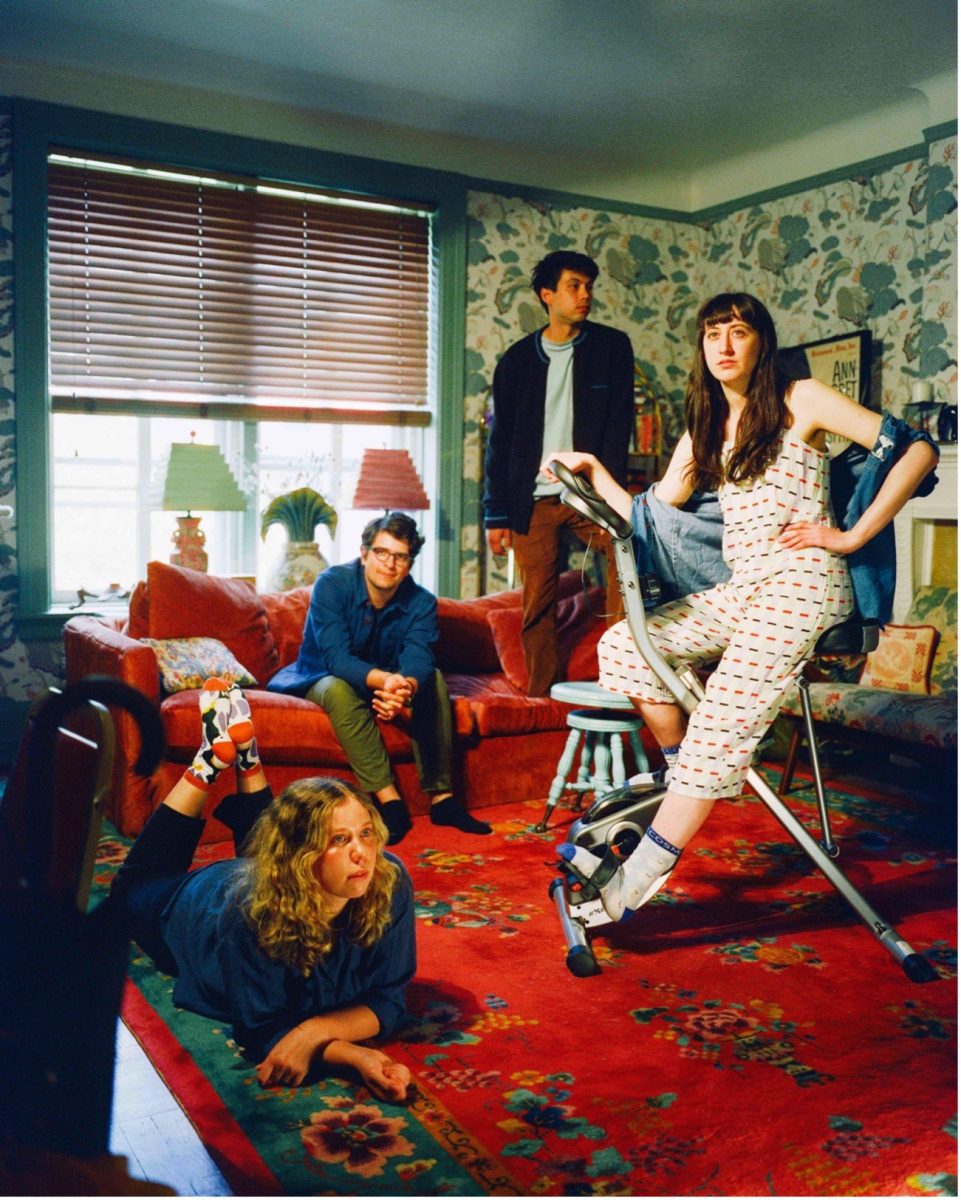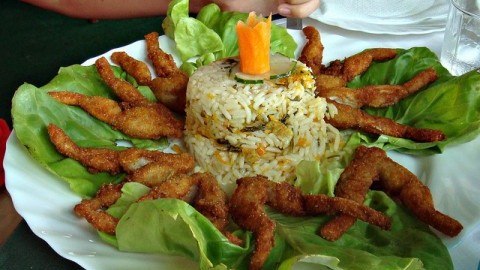PATAGONIA — 7 a.m. I wake up to the shrill of an alarm and roll over on my top bunk, releasing the warm pocket of air underneath my big, wool blanket. With half of my body hanging off, I manage to pull back the drapes and take a peek out the window at the snow-capped mountains surrounding the quaint village of El Chaltén. I use my hand to wipe away some of the fog and dew on the window. The weather and visibility are on the only two things on my mind at this point. Raining or snowing? Cloudy or clear? Cold or frigid? The strong wind is quite apparent as it hisses through the cracks in the walls and floorboards, and batters the small houses of the village’s five hundred inhabitants.

Created in 1985 as a means of controlling territorial disputes between Argentina and Chile, the village of El Chaltén has an intrinsic hardiness about it: The makeshift A-frame houses, the aging dogs, the unrelenting wind. Even the weathered faces and hands of the local people. Its empty roads and distance from “civilization,” make it an intimate and special place; for me, it’s an undiscovered gem. Tucked deep into the Andes, it has quickly transformed into Argentina’s trekking capital.
I quickly wolf down breakfast. Ten vanilla crackers and an alfajor — a sweet traditional snack consisting of two cookies held together by dulce de leche (Argentina’s caramel). Then, I pack on the layers: Three pairs of socks, three pairs of pants, four long-sleeved shirts, three sweaters and my blue winter jacket. My skinny frame needs all the help it can get; cold is never a battle it wants to fight.
As I get dressed, my mind can’t help but drift to all the places I’ve been and the beautiful people I’ve met in the past three months while studying in Argentina. It seemed like yesterday I was hugging my dad good-bye at John F. Kennedy Airport, headed for my new home — Buenos Aires, Iguazú Falls, Oktoberfest, watching thousands of Argentines protest the current President, Cristina Kirchner. All the times spent with my host family, the nights spent at crazy electro dance clubs until 8 a.m., touring Bariloche… and now, here: My mind quickly redirects to today’s mission — Mount Fitz Roy. Standing at over 11,000 feet, its majestic peak and towering size have made it one of Patagonia’s greatest landmarks.
At 8:30 a.m., a local bus drops us off. By us, I mean the seven other Americans from my exchange program and myself: four girls and four guys. We’re from all over the U.S. We’re told we have an eight hour trek ahead of us so I bundle up, ready for everything a bitter-cold morning has to offer. We walk a half-mile or so and pass a sign saying, “Parque Nacional Los Glaciares.” Nice, I think to myself, as we step onto the trail to start our trek.
Downhill, uphill, gradual inclines and turns. The trail is surprisingly well kept. It twists and turns past bogs, thorn bushes, and trees that look like they’re growing puke-green beards. Some trees even look they’re stretching: limbs and branches arching over the trail. As we walk further and further, the sound of a large stream becomes apparent. Although I can’t see it, I can feel its presence. It’s like an auditory drug that relaxes me — my body, my mind. It relaxes me from the everyday craziness of living in a big city like Buenos Aires, pulling me into the present moment. I become obsessed with its sound, a sweet buzz that inundates my whole being. I feel it’s the only thing I need right here, right now.
It’s 11 a.m. and as usual, I’m bringing up the rear. From a distance, I see my friends stop and stare in awe at something to the right of the trail. I can’t read their lips, but their looks say it all: As I approach, I look to the right at one of the most beautiful vistas I’ve ever seen — a light blue glacier wedged between two brown mountains. It resembles a blue raspberry jolly rancher. It feels cool and icy. For whatever reason I don’t trust my eyes, so I look away and then back at it multiple times. It looks photoshopped — to perfect to be real.
The idea of a giant piece of ice is completely foreign to me. It doesn’t exist in the Northeastern region of the U.S. In fact, in my mind, I’m a witness. A witness of one of the most beautiful geographical formations ever to shape our Earth. I feel as though I’m seeing an endangered animal or plant that soon will be wiped from the face of our planet. I feel lucky, even privileged. One day, I hope that my children can witness such a sight. It’s uncertain for sure. I snap several photos, only to be disappointed at the outcome.
It’s now 1 p.m. After eating hard boiled eggs and salami sandwiches, our eyes and focus are set on the Fitz Roy. We don’t really know what the climb is like or if there is any at all. We make a new friend from Holland, Elena, who joins us for the climb.
We get to the base of the trail and start our ascent to the top. The trek resembles a Black Diamond, with rocks and more snow. The trail zigzags up the side of the mountain as far as I can see. It doesn’t feel dangerous, but it’s the elements that seem to be the obstacle: strong winds and lots of snow. Lucky for us, the early birds have created tracks for us to use. As we go higher and higher, everything becomes miniature: the trees, our lunch shack, even our own trail. The conditions have become slicker as well. Sometimes I even have to resort to crawling on my hands and knees because there isn’t much to hang on to for leverage. As our elevation increases, the snow has developed a thin, icy layer which has certainly made things interesting for me as I am wearing my worn out running shoes. A couple of times I stepped on an unstable rock only to have it tumble several hundred meters down the mountain. I like it like this: exciting conditions, not too dangerous. After about one and a half hours of climbing, we were there. The uphill battle was over.

At the top, things became more intense, more vibrant: the snow, the wind, even the colors. I felt as though my surroundings were trying to tell me something, as I felt on top of the world, literally and figuratively. The energy and beauty of my surroundings seemed to go inside of me, galvanizing every cell in body. Up high, I can see “the system” in one panoramic view. The various streams meeting up to form a river, barren, open land, hundreds of dead trees affected by a local forest fire, cliffs with varying sediment layers and Laguna Sucia — one of the park’s most beautiful lagoons.
At 2:45 p.m., the Fitz Roy is front and center. Its face is covered, but we can still see its impressive build. We are lucky even to see him at all, as the past couple of days have been cloudy. At first glance, the word that immediately comes to my mind is “incredible.” As I stare at it more and more, he reminds me of the Beast in Disney’s Beauty and the Beast. He doesn’t want us to see his face, hiding it from everyone. A sense of strength and stubbornness lay in his atypical structure and strong winds but look further, and you’ll see a level of shyness there. He’s beautiful.
The hostel owner told us that when all the clouds are gone and its face is exposed, it’s supposed to be one of the most beautiful sights at the bottom of the world. I can’t even imagine. In fact, hundreds of climbers come from all over the world to attempt to reach its grand summit. Many have, others have died. My eyes try to navigate the way up, the path one would take, but its contorted shape makes it difficult.
The winds are the strongest they’ve been now. It’s even hard for me to pull my camera out of my pocket. Snow is swirling and falling pretty aggressively, blasting me in the face at every moment. I look around at my friends. All of us are smiling, ear-to-ear. Some of my friends even pull out whiskey. I think we all silently realize that this hike has been special; one never to be recreated or duplicated ever again. Our hike has been a group effort: us, our new Dutch friend, the snow, the winds, the clouds, the trail, and of course, Mount Fitz Roy. After a couple group shots, we head back.
As the group heads out, I trail in the back, hoping to get a glimpse of the face of the Fitz Roy. I stand in silence, thanking him for giving us a glimpse of his beauty and for giving us this experience together. I think to myself that I hope that our paths cross again in the future, maybe with my own family and children, or with my best friends. If nothing else at all, I just hope that he’ll remember me.
Mark Reppert can be reached at [email protected].








